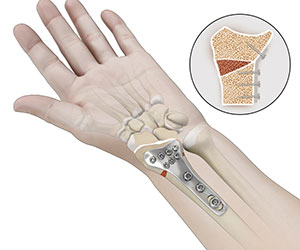
What is Distal Radius Malunion?
Distal radius fractures of the wrist can range from a minor fracture of the radius bone without joint dislocation to serious injury where the fractured bones protrude through the skin. Non-surgical treatment options can heal most of these fractures. In certain cases, the bones may heal with a deformity called a malunion, resulting in improper functioning of your wrist. You may experience pain, stiffness and difficulty flexing or bending your wrist due to the altered anatomy.
Osteotomy for Distal Radius Malunion
Osteotomy is a surgical procedure to cut and reshape deformed bones. Your doctor recommends osteotomy to correct distal radius malunion when non-surgical options such as splinting or physical therapy are unsuccessful.
Preparation
Your doctor will assess your symptoms and take your medical history. A physical examination and imaging tests such as X-ray, CT-scan or MRI may be ordered.
Procedure
The procedure may be performed under general anesthesia and includes the following common steps:
- A small incision is made at the wrist near the wrist joint.
- The area of deformity is exposed. Care is taken to prevent damage to the nerves.
- Your surgeon performs the necessary resection and reshaping of the bone.
- Screws or locking plates are used to align the bones.
- Bone grafts (bone tissue from elsewhere in your body) may be inserted and impacted to the fusion site.
- The incision is closed with a bandage and a splint is applied.
Rehabilitation after Surgery
Rehabilitation after osteotomy involves:
- Your wrist will be enclosed and supported by a splint or cast.
- You will be advised to keep your arm elevated on pillows above the level of your heart.
- Physical therapy may be ordered to help restore wrist function, strength, and range of motion.
- You will be advised to eat a healthy diet and to quit smoking to promote healing.
Related Topics
- Osteotomy for Distal Radius Malunion
- Wrist Open Reduction and Internal Fixation
- ORIF of Distal Radius Fracture
- Trapeziectomy
- Peripheral Nerve Repair
- Wrist Arthroscopy
- Microvascular Surgery
- Wrist Joint Replacement
- Carpal Tunnel Release Surgery
- Wrist Ligament Reconstruction
- Total Wrist Arthrodesis
- Hand Fracture Surgery
- ORIF of the Forearm Fractures
- Endoscopic Carpal Tunnel Surgery
- Wrist Fracture Fixation
- Sports Injury Management of Hand, Wrist and Elbow





